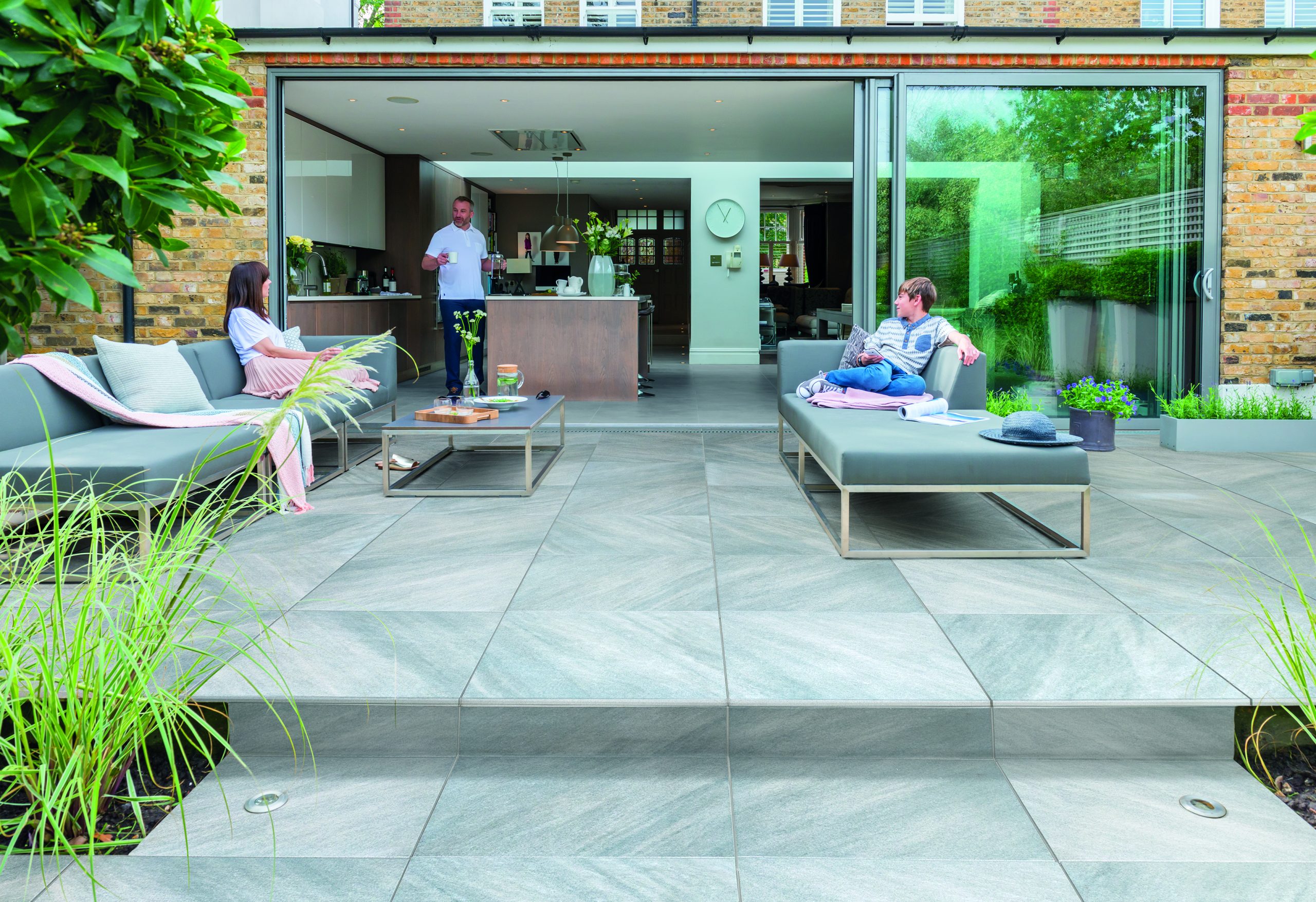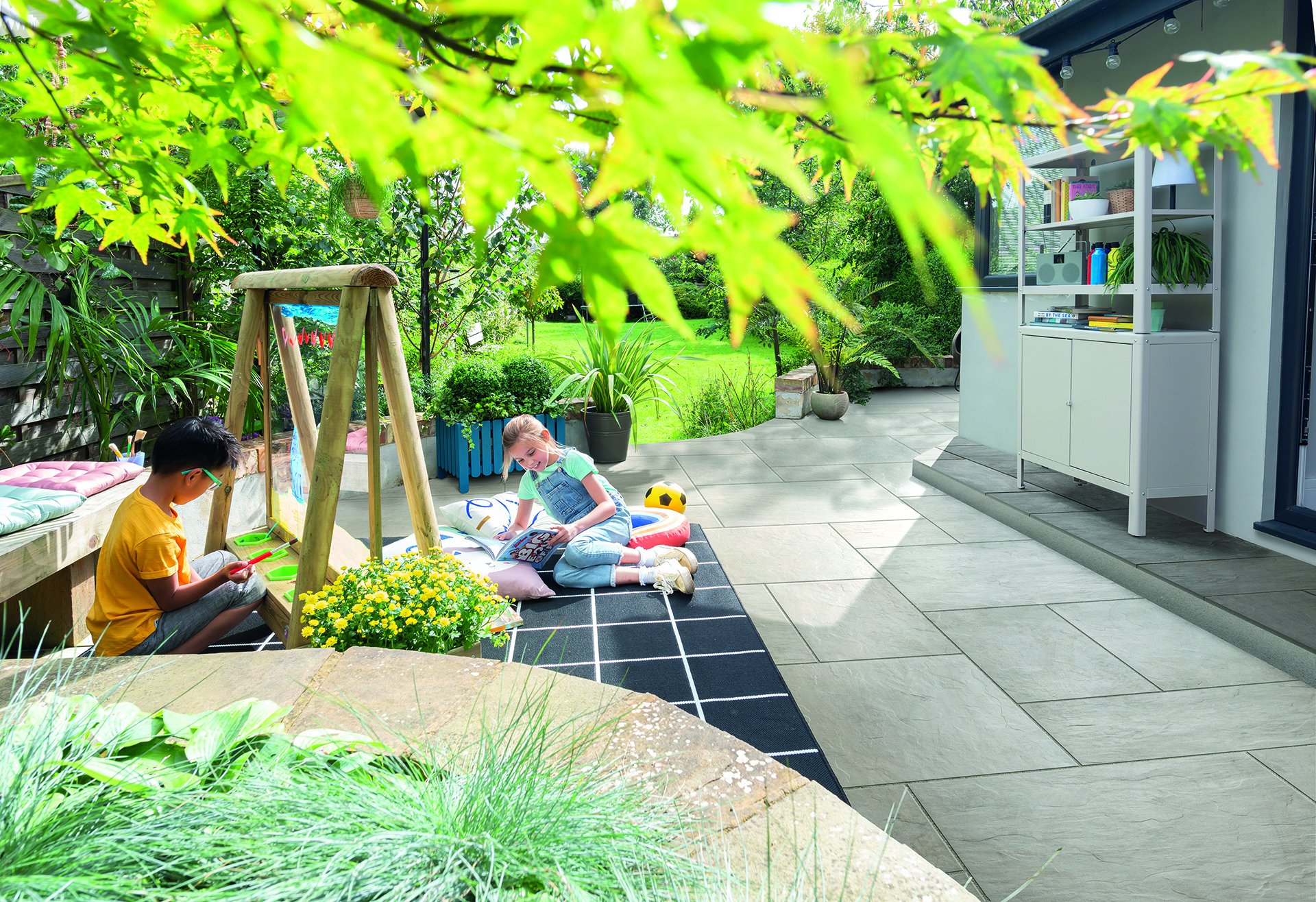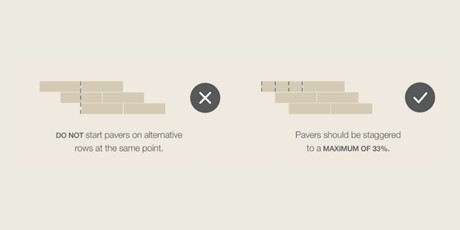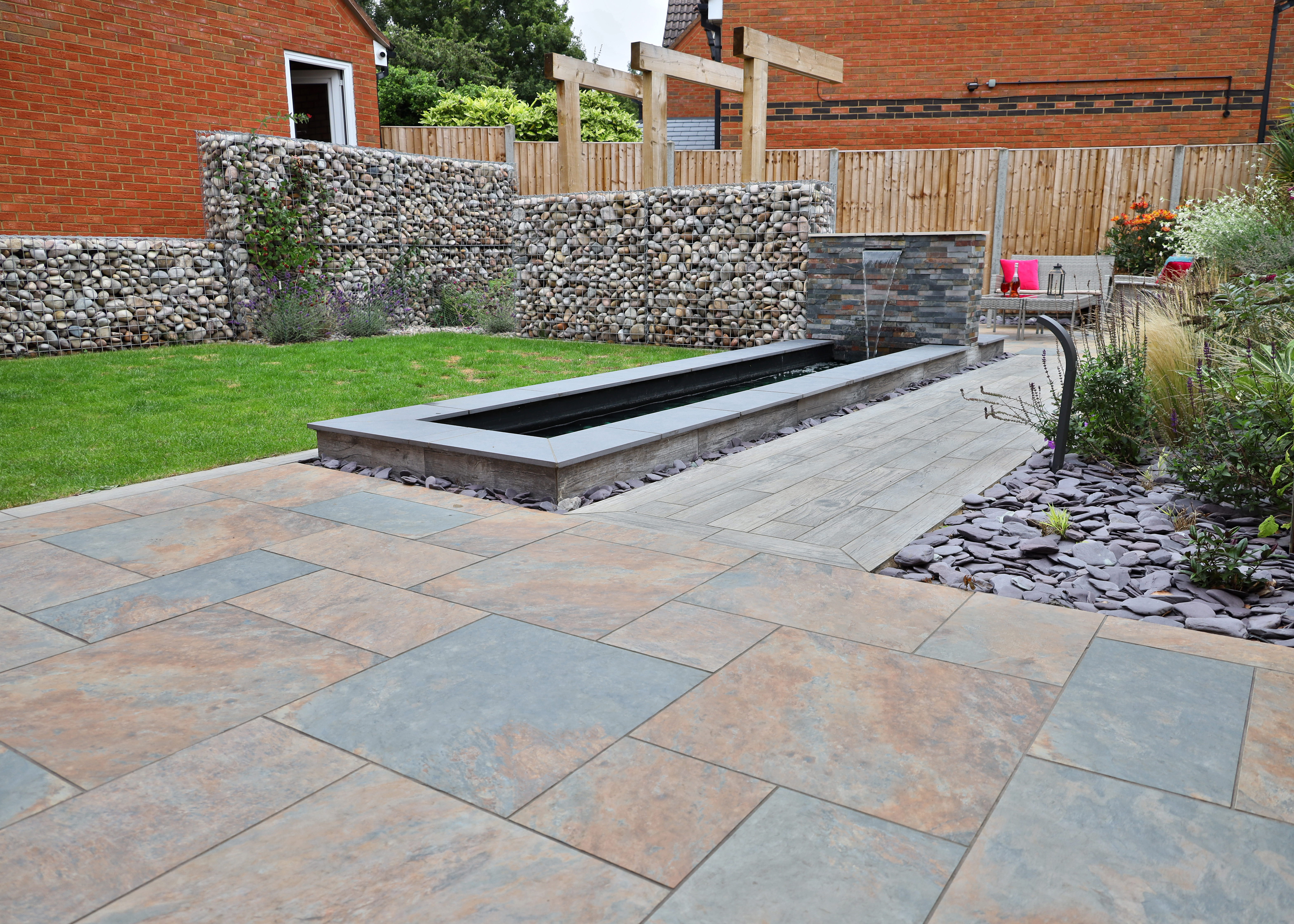
PORCELAIN INSTALLATION AND ADVICE GUIDE
We always recommend that for best results you consult with a specialised landscaper for a professional installation. However, we understand that some people may not have the budgets for this and may want to try their hand at laying their patio themselves. Our Suppliers have pulled together a simple guide on laying your paving.
Ensure you read our advice before beginning work on your new design project – this will mean you are fully prepared and have everything to hand, ready to complete your perfect garden.
Please note:
Ensure you are wearing appropriate safety protection throughout your task. Wet mortar can burn exposed skin so make sure you are wearing suitable protective gloves and long sleeves to protect your arms.
Tools you need:
A shovel
Trowel/float
Rubber mallet
String line & pins
Spirit level
Pointing trowel
All in ballast, building and sharp sand is available from a stockist and they will be able to advise on quantities
Water
Sponge (to clean off as you go)
Mixer (optional)
Wheelbarrow

Always dry lay your patio first. This is a simple job of laying out the paving as you want the finished patio to be. Check the size, layout and more importantly, that you have enough pavers.
STEP 1: MARKING OUT
Mark out the area, allowing an extra 150-300mm for working room.
STEP 2: EXCAVATION
Excavate a minimum depth of 150mm, allowing for a 100mm sub-base, a 30mm mortar bed and the paving itself. To comply with building regulations and protect your property from damp, the paving must also be at least 150mm below any damp-proof course (DPC).
STEP 3: ESTABLISHING LINES AND LEVELS
The paving needs a slope or fall of around 1:60, i.e. 17mm of fall for every metre width or length of the patio. Use one taut string line to guide alignment along the length of the paving, and a second along the breadth. When laying, you should use a straight edge and spirit level to repeatedly check that each new paving unit correlates to both lines, adjusting the height up or down to give the necessary fall.
STEP 4: SUB-BASE
A Type 1 or MOT sub-base is required to give strength and stability to your patio. It is good practice to use a geotextile over the ground first. Spread the aggregate out, forming an even layer. Use a plate compactor to consolidate the aggregate down.


Use a mechanical mixer (if possible) to make a mortar of 4:1 sharp sand to Ordinary Portland Cement (OPC). Avoid building sand or white cement. The mortar should bind together without being sloppy or runny. A plasticiser can help get a more workable consistency.
STEP 6: PREPARING THE BED
Using a shovel or trowel, apply the mortar to the sub-base, levelling it out. Ideally, the bed will carry the flag 5-8mm above the required level. Prepare the laying bed to ensure full contact between the paving slabs and the mortar. Spread only enough mortar for one flag at a time, ensuring the bed is larger than the flagstone.
STEP 7: PRIMER
All paving should be primed with a polymer modified cementitious slurry primer to adhere the paving to the mortar bed. Use a masonry brush or trowel/float to coat the entire underside as per the manufacturer’s instructions. Take care to avoid getting any primer on the face of the flags as it sets rock hard and can be impossible to remove if allowed to dry.
STEP 8: PLACING
Once primed, the paving unit can be placed onto the bed. Carefully lower each one onto the bed. Beware of any drips or splashes from the primer and use spacers to guide your joint widths. If you need to cut any flags to fit, use a top quality diamond blade fitted to a bench saw with dust suppression.

PLACING 900X150MM PAVING
When laying any porcelain paving over 800mm, remember to only stagger the paving to a maximum of 33% of the length:
Joint widths should still be at least 5mm. Using spacers will help to achieve uniform joints.
STEP 9: COMPACTION
Use a rubber mallet to tap the flags down to the correct level. Check there are no high spots or hollows to ensure complete contact between the primer-coated base and mortar. You should also check against the string lines to make sure each flag is level and aligned. Make any adjustments now before the mortar becomes too stiff and wipe down the paving once again in case any primer or mortar has touched the face of the flags. Better to be safe than sorry!
STEP 10: JOINTING AND DRESSING
Apply the jointing using an outdoor grade jointing material suitable for use with porcelain. Then cordon off the freshly-paved area, avoiding any foot traffic for at least 24 hours.
We strongly recommend the finished laid area be thoroughly cleaned/washed down using a porcelain cleaner which helps remove deposits that may be present. It is also recommended that periodic cleaning with a porcelain cleaner will help to keep the paving looking its best. Lastly, dress the patio…and enjoy!

Four tips for success:
As a reminder, follow our four tips for success:
- Always dry lay the patio first to ensure you have checked the measurements.
- Create a good solid foundation and check the depths.
- Start laying the patio from the corner and work outwards.
- Check the levels and fall frequently to make sure you stay on track.
Benefits of using the full bed of mortar and primer are:
* Less voids beneath the slabs, which makes them more unlikely to fracture when loaded.
* Less voids beneath the slabs, therefore stopping water accumulating which could lead to subsidence or instability
* Primers or bonding agents secure paving slabs to the bedding mortar, reducing the risk of movement and therefore cracks etc.,
*British Standard 7533: Part 4 which covers the installation of concrete, natural stone flags and slabs, requires that these are laid on a “full bedding layer” giving uniform support, this applies to all classes of pavements including patios and driveways.
*The British Standard recommends that a slurry primer should be applied to the underside of all paving prior to laying to improve adhesion.*
Note: The above information is given in good faith, but for guidance only. However if alternative laying methods are used it may result in the porcelain becoming damaged, and we cannot accept any responsibility for this.
Get in touch
Contact us with regards to any enquiries and further information you require on our products.
We deliver to most locations in Somerset (Weston-Super-Mare, Burnham-on-Sea, Bridgwater, Taunton, Exeter, Street, Glastonbury) If you need your products delivered please contact us

